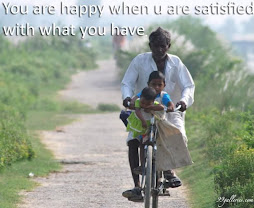The Nepali festival ‘Tihar’ is also known by many names such as Dipawali, Bhai Tika, Laxmi Puja and Festival of Lights. Tihar is one of the biggest festivals in the Hindu calendar and marks the arrival of the new moon starting a new year in the Hindu calendar. This five-day festival is a time of great celebration, religious ceremonies and feasting, with families eating special traditional meals and worshipping different animals.
The first day, devoted to crows (Kag in Nepali), is called ‘Kag Tihar’. Early in the morning on the first day of Tihar, each family prepares a good meal. Each member of the family carries the first portion of the meal outside the house on a platter. The crows come down and partake of the feast. According to Hindu mythology, crow was a messenger of the Lord of Death, Yama. There is a popular Nepali superstition about crows too: when crows caw, it indicates that sadness is approaching. On this day, crows are worshipped and kept happy. So, Tihar is also about appreciating animals around us.

On the second day of Tihar, Kukur (dogs), ornamented with flower garlands and red tika (special temporary mark on forehead), are offered enormous meals. On this day, people pray to the dog as the guardian of their homes. In Hinduism, it is believed that dogs guard the kingdom of the netherworld just as they guard our everyday homes.
The third day of Tihar is about worshiping the mother of the universe - cow. According to Hinduism, the human infant is fed breast milk by its human mother for less than three years. After weaning, the cow acts as the surrogate mother providing milk for the rest of a human’s life - through childhood, adulthood and old age. Cows are the mothers of the universe, considered sacred animals. The cow puja is performed by placing a tika on the cow’s head and adorning it with a flower garland, and offering a good meals.
The third days, is one of the most important days of the festival, is Laxmi Puja when the Goddess of Wealth (Laxmi) is worshipped in every household. On this third day of the Tihar, almost every house becomes a spectacle of lights. Pictures and icons of Laxmi are placed and worshipped in a puja room and puja is performed using flowers, incense, oil lamps, colored powders, bell and money. Laxmi Puja is performed at sundown using red mud. The puja is often performed by a female in the family. She uses her hand covered with red mud to make a symbolic foot-print from the yard to the doorway at the entrance to the home.
Laxmi Puja is not only performed in households but equally by business houses. Usually the company's cashier or owner performs the puja, with participation by the company’s staff. During the Tihar period, the whole office including compounds are lit up with various electrical lights, candles and oil lamps.

The evening of Laxmi Puja day is made magical not only by the lights but also by echoes of a special song known as Bhailo or Bhailini. Bhailini is sung only on this day in the whole year. A group of girls get together and go around singing Bhailini from door to door, giving benediction to the family in return for money and homemade treats. On the fourth day of Tihar, male members sing the Deusi or Deusuray. A group of males get together, carry whatever musical instruments they can play, and go around singing Deusi from door to door.
The fourth day of the Tihar is also about worshiping yourself. This puja (worshipping) is known as Mahapuja. This is also the first day of the special annual calendar of an ethnic group known as Newar residing in Nepal. Also a popular ritual of the day is the Govardhan Puja or Goru Tihar (Oxen Worshiping). They are worshiped on this day as they plow lands and help grow crops to sustain life.
On the final day, also known as Bhai Tika Day, sisters give tika (a mark made from colored powder placed on one's forehead) and mala (a necklace of flowers) to brothers along with wishes for long life and prosperity. Then the brothers also present gifts to sisters. The brothers give gifts such as clothes or money to sisters while the sisters give a special gift known as Sagun which is made of dry fruits, nuts, candies and a fantastic Tihar feast.
Tihar is also the time for brothers and sisters to recall their continued wish for a long and a happy life to one another. To sum up the Tihar festival, it is the festival when sisters wish a long life to their brothers (Bhai)!
(PhotoBahitika:-ekantiur.com)











